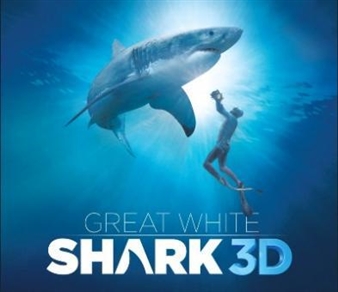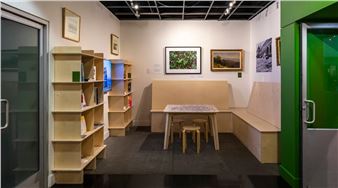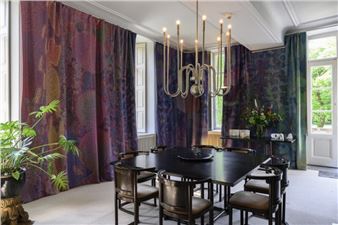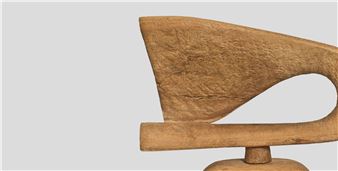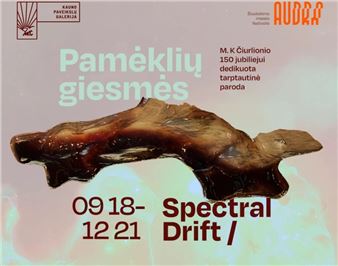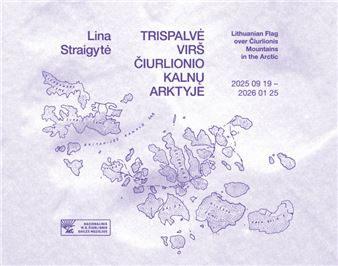Loreta RoЕҫeviДҚiЕ«tД—-ElksnД—: 3D autostereogram Three-dimensional Fairy Tale
This 3D autostereogram is based on M. K. ДҢiurlionisвҖҷ painting No. 2 of the triptych The Fairy Tale. But here, the image of a child with a sow-thistle flower and a mystical bird hovering above is hidden. The format of the work was enlarged and converted from horizontal to vertical (1.42 x 2.30 metres) so as to create an optical impression of rising as if weaving together the earth and the sky, transforming and interpreting the rhythmically repeating motifs in M. K. ДҢiurlionisвҖҷ The Creation of the World VIII, The Creation of the World IX and The Creation of the World XI. The stereogram created for the M. K. ДҢiurlionis National Museum of Art is one of the largest in the world.
In his artworks M. K. ДҢiurlionis often applied rhythmicity based on musical sounds. While observing an active pattern of the stereogram and plunging into the depths of a three-dimensional fairy tale, viewers are invited to experience the sounds of inner music by creating their own interpretation of the sounds.
Looking at the stereogram often helps to relax tired eyes and strengthens muscles of the eye as well. It also serves as a perfect way to reduce eye strain and fatigue experienced after working on the computer. Stereograms are also used in art therapy due to their positive emotional impact.

Recommended for you
This 3D autostereogram is based on M. K. ДҢiurlionisвҖҷ painting No. 2 of the triptych The Fairy Tale. But here, the image of a child with a sow-thistle flower and a mystical bird hovering above is hidden. The format of the work was enlarged and converted from horizontal to vertical (1.42 x 2.30 metres) so as to create an optical impression of rising as if weaving together the earth and the sky, transforming and interpreting the rhythmically repeating motifs in M. K. ДҢiurlionisвҖҷ The Creation of the World VIII, The Creation of the World IX and The Creation of the World XI. The stereogram created for the M. K. ДҢiurlionis National Museum of Art is one of the largest in the world.
In his artworks M. K. ДҢiurlionis often applied rhythmicity based on musical sounds. While observing an active pattern of the stereogram and plunging into the depths of a three-dimensional fairy tale, viewers are invited to experience the sounds of inner music by creating their own interpretation of the sounds.
Looking at the stereogram often helps to relax tired eyes and strengthens muscles of the eye as well. It also serves as a perfect way to reduce eye strain and fatigue experienced after working on the computer. Stereograms are also used in art therapy due to their positive emotional impact.

 ARTISTS
ARTISTS









